#its funny that people ask the most about ar lo when i can say the least about him of any of my characters ;u;
Explore tagged Tumblr posts
Note
Hi Cyliph, can you tell something about Ar-Lo, he looks so interesting^^
I'm honored people like him :,)

[Potential small HDBS spoilers]]
Ar-Lo is old. Very old. Old enough to be considered somewhat of an cryptic figure among architects. He remembers a time when architects were not all One. Hundreds of thousands of years old. He was created as one of the first waves of expansion during a time when architects had just transferred to their biomechanical vessels. He's seen generations of vessels rise and fall out of use. One of the first ever born with no real parents or family or heritage.
A blank slate of an individual created to protect a colony world known as Juit-Eh from encroaching conflict (At least- that was the intention, the code recombination and manipulation technology was still new).
More below cut.
Who they were fighting, why, and for what has been lost to time. Ar-Lo himself remembers little of that bygone age and its politics. Its been lost to the network through information surges and wipes. What is known is that approximately 300,000 years ago Ar-Lo was functioning as a gladiator primarily based in Juit-Eh still. The indomitable vessel he used (barely modified-- not designed by him) was a real crowd pleaser to architects and non architects alike. It brought in loads of tourism-- and with it currency to the planet. The practice was considered too brutal by homeworld standards, and the end of his career was the annexation treaty that brought Juit-Eh back in to the protection of Oulinaean forces.
This annexation brought Juitian representation to the Tel Ju council. The representative brought a body guard with him, the most popular (former) gladiator known as Ar-Lo. The biggest 'fuck you' he could manage.
--
As it turns out, when you're primarily locked in the innermost sanctum of the most secure piece of architect territory you don't exactly get much valor. Not that Ar-Lo needed it. His pride was his strict loyalist views and sharp mind. He soon enough became versed enough in political talk that he could hold in own in any debate you threw at him. His trained body language and biolights (from years of existing as nothing but a background ornament) served him well in ensuring no other was able to get under his skin. His oratory skills only highlight his trained physical prowess and his rising influence on political matters made those in charge wary of him.
Ar-Lo proved his competency well enough that he was promoted over the course of years to supreme commander of the military. A scary job, and an isolating one. Not that it made a difference, by the time he reached the position anyone in networking distance already had a firewall up. He was already an unpleasant, paranoid, and a violent loyalist.
Though Ar-Lo had plans for every potential physical threat inside and out he was not prepared for the devastating plague that ripped through the architect colonies. Isolation barrier on isolation barrier proved useless, and with no cure in sight the council had to enact their most dire contingency plan. Ar-Lo was one such soul chosen to stay behind.
.
..
...


----
...
Cy fun facts:
Ar-lo was designed as the foil for Robin and Al-an in HDBS, he wasn't suppose to be likeable, but I'm grateful so many people want to know more about him. I cant reveal everything though.
He is brown because he needed to contrast the surrounding landscape, which was primarily green and dark turquoise.
Strange even among architects is that he does not experience dizzyness from vessel swapping no matter the size. Perhaps a remnant of his time as a gladiator, or maybe years of trained neural control.
Ar-lo might hold the record for oldest architect, especially post-kharaa.
His vessel is pretty standard bulky for guardsmen-- but he hasn't always used this vessel.
Before he became a political figure he was actually considered pretty handsome and likeable, like a celebrity. Even though his personality and skill didn't change.
He has never figured out how to properly integrate himself in architect society despite his age. This often leaves him frustrated and the only way he knows to take out that frustration is violence.
Ar-lo is only his current designation
Ar-lo likes art. Not realism, though. He likes art that makes you question things or appreciate the skill of the artist. The piece that represents him most closely is Josef Alber's Homage to the Square: Sentinel
Armor - Oulinaean (homeworld - left) - Jutian house (right) His thick hide serves as natural armor, anything else is just decorative, shows heritage, or is multitool storage.
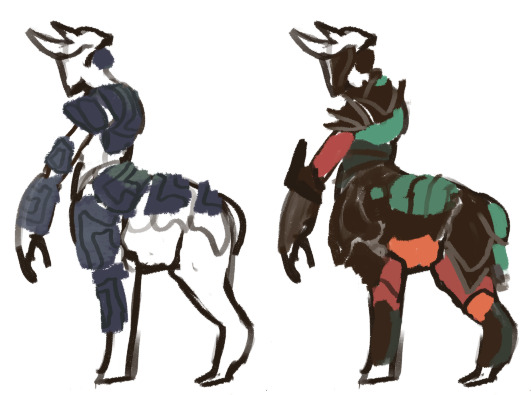
Playlist:
PRE-KHARAA Seether - Words As Weapons Psychodelic Prn Crumpets - Found God in a Tomato Radiohead - Nude Five Finger Death Punch - Remember Everything Seether - Country Song System Of A Down - Spiders Puddle of Mudd - Blurry POST-KHARAA Soul Survivor - ORDER TotalDeadCenter - The Forgotten Soldier Skaen - Grief, Aftermath Mother Mother - Sleep Awake Vessel - Red Sex (Re-Strung) Vivivivivi - Reduced to Guts Pogo - Undone <- His theme song!
#i fucking love music <3#feb 2 was his birthday btw :)#subnautica#sbz#subnautica below zero#ask#architect oc#worldbuilding#ar lo#its funny that people ask the most about ar lo when i can say the least about him of any of my characters ;u;#hdbs#hdbs spoilers
53 notes
·
View notes
Note
May I ask why you dislike LO? I enjoy reading the series, and there are faults in the writing (as no series is perfect) and I have my own gripes with it, but overall I just really like the myth of Hades and Persephone.
I'll admit there were things that made me uncomfortable when I first started reading it (and they still kinda do) like Persephone being a teenager while Hades is, what - 40-60ish? The timeline (of the story taking place over the course of only a few weeks, when a Lot of stuff is going on), Hera the goddess of marriage having an affair, Demeter being an overbearing mother who financially takes advantage of her daughter, some of the flashbacks (like specifically the one where a much younger Kore meets a drunken Hades and falls on top of him while naked? And its played off as a meet cute)
But thats besides the point - I'm curious as to why you don't like LO and/or the creator of it I guess?
Also your posts are showing up in the lore Olympus tag - (and I know there's probably a seperate "anti-lo" tag but I also wouldn't be surprised if angry anons came into your inbox for spamming the tag of the webcomic they like with criticism, because apparently thats what people do on this hellsite instead of just blocking). And, of course your entitled to critique the series, but I'm sure some people are not going to be happy about that. (I say this as a person who enjoys critiquing media, like netflix's spop reboot, and have had angry anons come at me before, so stay safe out there).
Also, sorry this is so long.
Heyo! And I understand
I'll take this time to get into why I don't like each character as it's one of the reasons I don't like LO as a whole:
(Some I removed because there isn't much to say about them)
Main Characters:
• Hades - Man in his Late 30s to Early 40s actively pursuing a 'teenaged girl'.... He acknowledged that this was wrong at yet pursues her anyway? Plus, he's perfectly fine with slave labor and using his power/status to get his way. His character is also inconsistent when it comes to Minthe because one minute he can stand up for himself and the next he's terrified?
• Persephone - An overly sexualized teen who acts like a child. She also killed people but it was because of a 'feeling'. She still committed murder and yet it's framed as a "well, it's not her fault" but I'm also supposed to believe this 19-20 yr old would make a great and feared queen.
• Hera - Not only does she treat the lower class like garbage but she's also a hypocrite (the affair). Plus, she just randomly goes back on her word about Hades being a creep for no reason.
• Eros - Put a girl in some random dude's car and gave her "apology donuts" as a sorry gift 😒
Antagonists:
• Minthe - She was coded with bpd which wouldn't be a bad thing if she wasn't so demonized by the story.
• Apollo - How come this dude is one of the most prevalent people in the story and we don't get a strong motive for him until season 2? Even then, we barely know anything else about him. I get the whole "well, he did this so I don't want a backstory for him" but at least give him a solid motive. One that comes from him directly.
• Thetis - One of the sweetest people gets turned into a homewrecker for no reason. Even then, people gloss over her being verbally manipulative to Minthe.
• Leto - Also verbally manipulative to her daughter. How comes RS decided to demonize the goddess of motherhood, too? There's really no justifiable reason for that.
Others:
• Hecate - Also switched up about Hades and Persephone. Let's not forget her hitting Hades 3 times and him having to tell her to stop.
• Artemis - I get letting her brother in the house but Eros and Hermes? That's just inconsistency right there.
• Demeter - Got demonized for the 5973th time 😔🤚
• Aphrodite - Also rude to the lower class but it makes more sense as she's Aphrodite. Still rude af though.
• Hermes - Man got mad at Thanatos for "messing with his money" as if he didn't cover the whole thing up with Demeter
• Hestia + Athena - Just hypocrites and the fact that they're supposed to be (aro)ace goddesses.
• Ares - He and Persephone also made out when she was 18 and I assume he was way, way older. Plus, him simping for Persephone in front of Aphrodite was an odd move.
• Hephaestus - This issue has more to do with RS's writing because how the hell did he hack Apollo's phone from Persephone's sim card alone and why is that just never explained?
• Daphne - Excusing nepotism as if Thanatos doesn't work in the same place as Persephone
Now, onto the story:
Its pacing is slow but also extremely fast for what it is. Everything (excluding flashbacks) has taken place over the course of 2-3 weeks. Persephone literally gets SA'd the day after the party. But then you have to think about how Persephone and Hades are probably going to get married like a month after their second meeting. We haven't even gotten to the trial yet and it feels like we never will with how slow everything is. LO honestly isn't made to be like a regular webtoon, it's made to be binged like a Netflix show or something. That would be fine but I can tell from interviews that it wasn't RS's intentions.
Also, RS herself? Yeah, don't really vibe with what she says a good portion of the time
I'll show some examples:
Not all of them are bad, just very weird


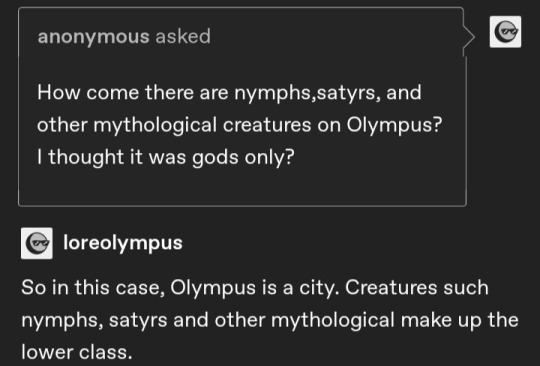
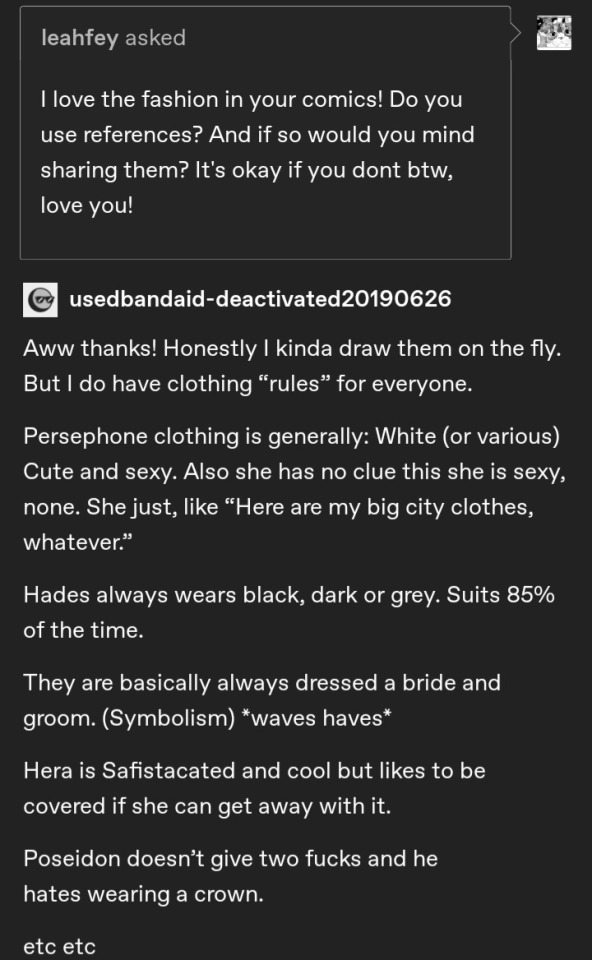
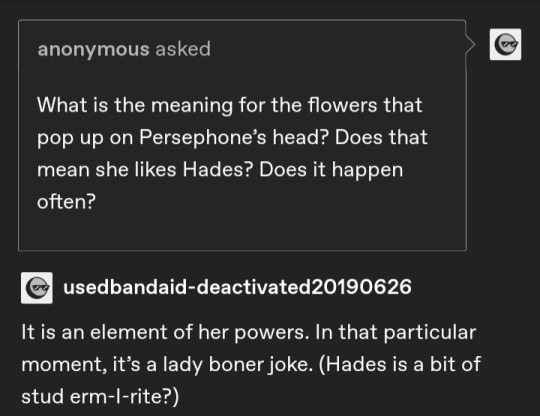
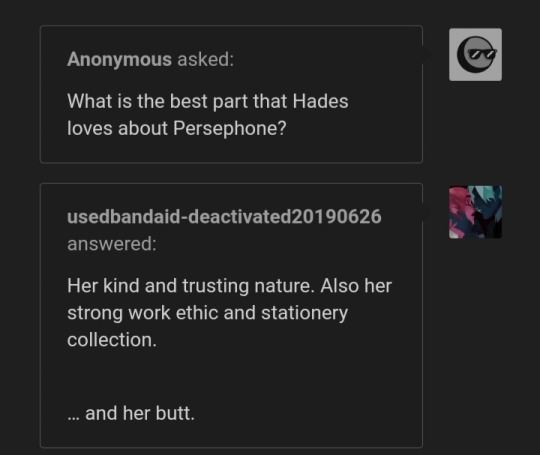


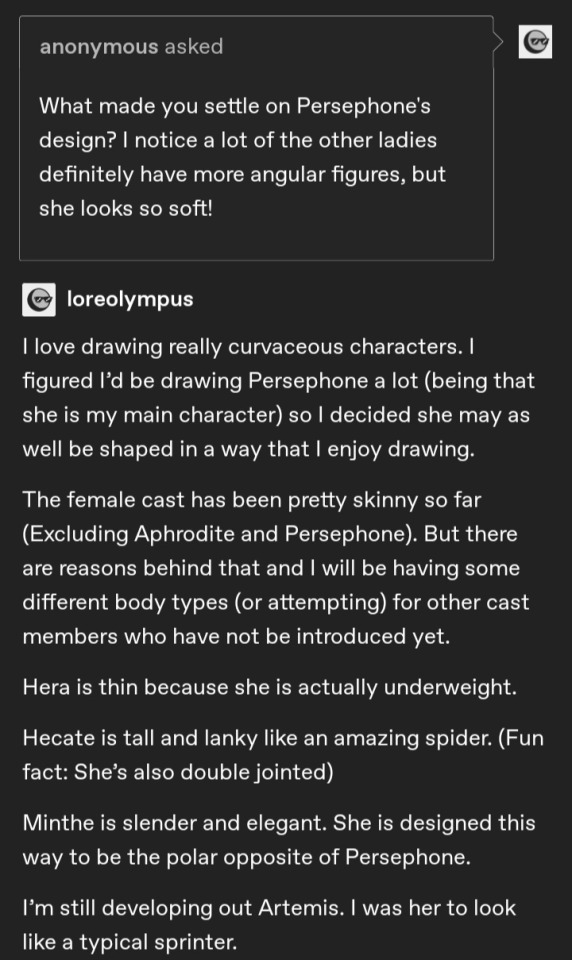
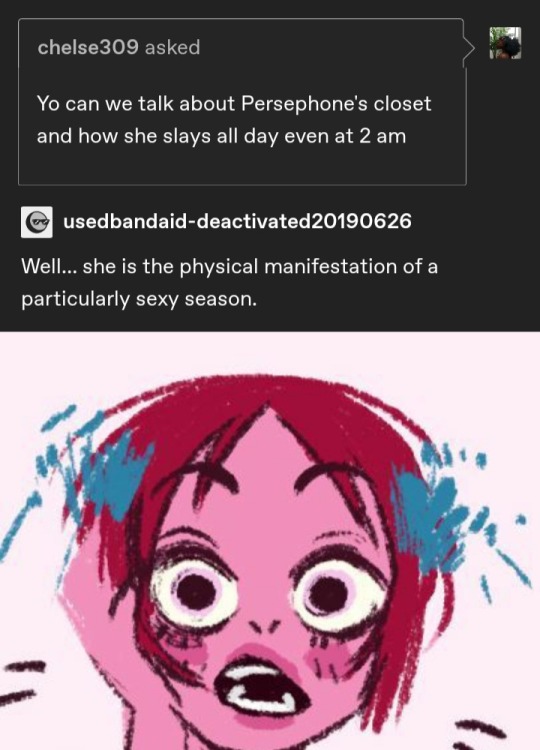
Besides the wonky art, she does have potential but LO doesn't really show her skill. Hopefully, she does learn from this comic though.
About the hate, I honestly don't care that much anymore as it really doesn't change much. I respond but only because I find it funny/entertaining when someone tries to tells me what to do with my own freetime.
64 notes
·
View notes
Text
PERCEPTION OF DOORS

Was reminded by a conversation yesterday about the art of the club door person, and dug this out, which I wrote for the Amsterdam Dance Event annual back in 2014.
---
If you want a clear view of how clubland operates, why not ask its guardians? The men and women who stand at the doors – whether to take money, pick and choose who gets in, or act as enforcers of rules – are the first and last people clubbers will see in their night out, and are uniquely placed to assess what makes the clubbers themselves tick. They are the interface between club, clubber and promoter, and able to provide a (more-or-less) sober overview of what goes on. But frequently, too, they are the filter: they are the one person more than anyone whom by their choices, defines the nature of the crowd on a given night. As such, they are not just list-tickers, cash-till operators or hired muscle, but are a vital cog in the club's cultural machine, a part of the club's personality. And plenty of them are as big a music lovers as the promoters or DJs too. So from London to New York, Glasgow to Pretoria to L.A., we present the past, present and future of these essential sentinels and unsung heroes of the night.
BIG FRANK
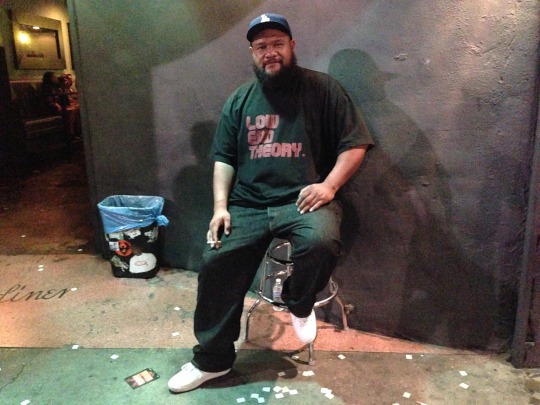
Big Frank, aka Faafaga Samuelu, is a true Los Angeles legend. The imposing Samoan-American was a school friend of underground hip hop DJ/producer Kevin “Daddy Kev” Moo, and they threw parties together from Junior High onwards (“I was the muscle, he was the brain,” laughs Frank; “a perfect combination”). But Frank was also a hardcore gangbanger in his late 1980s / early 90s adolescence: “I remember him showing me a sawed-off shotgun in 8th grade while we were riding the bus to school,” says Kev, nonchalantly. Frank served serious jail time in the late 90s, but when he came out, Kev was there, happy to team up again.
Kev founded the legendary Low End Theory – hub of the psychedelic, electronic “L.A. beat scene” that spawned artists like Flying Lotus, Gaslamp Killer and co – in 2006, but by 2011 it had become so popular, hosting the likes of Thom York and Erykah Badu, that their host venue's bouncers were shaking down clubbers for bribes to get in. This was the moment when Frank's demeanour, reputation and willingness to turn up with an AR-15 assault rifle came into their own, and perhaps unsurprisingly the previous security stepped aside without any trouble to make way for him to take over on LET's Wednesday nights.
Since then, LET's reputation as a friendly spot has only grown. “Being the familiar face of the club,” says Frank, “is great fun and oftentimes just lots of funny. And if you're coming to us, you'll be more comfortable if you feel like you know the guy at the door – and a cool farewell at the end of the night helps as well!” Now in his 40s, he is happy to be a cool head, mainly in the background: “I have different reasons for being in the scene still,” he says; “What's still there is the love for music, but now my desire to be in the crowd is gone. The times of getting fucked up and bumping rap at a back yard party is long gone. What makes me happy, though, is the presence of the forty-somethings and even older folks that attend our club. It helps me feel like our push to progress the music is appreciated. As if all this time in the scene produced something that my generation can be proud of – not just slangin' and gang bangin'.”
JR

In South Africa, house music means more to people than almost anywhere else on earth. And Tebogo “JR” Modiba knows this more than most – his laid-back House 22 parties in Pretoria are an oasis of sophistication and unity in a society still riven with violence and harsh divisions. He ended up working the door there by default: “House 22 started an purely by-invite-only underground deep house joint,” he explains; “so as the founder, I had to work the door in order to overlook the invitations myself. Over time, we have opened up to the general public, but we still keep a close eye on disruptive elements who might not understand and appreciate the underground deep house culture.”
Like all the best doormen, though, he's not just there to filter people out. “The door is the most important part of the business,” he insists. “That's where punters, especially first timers, should start experiencing what the atmosphere of the club is like. All of that depends on how the doorman welcomes them and treat them.” In fact, his biggest problems are cops (“those fellas have serious anger issues, especially when they see people having fun while they are working – and they're the biggest tax collectors too, [taking money] to allow you to operate without interrupting your business with constant inspections, or to protect your patrons from being harassed”) and the weather. One time the mainly-outdoor House 22 venue was hit by tennis ball-sized hailstones, causing a near stampede for cover, which JR was able to only just keep from becoming mass panic.
All his efforts lead to a club where passion for music rules – and so it should, when JR's own love for house still drives everything. At the drop of a hat, he will reel off favourite DJs' names– Vinny Da Vinci, Christos, Glen Lewis, Jimpster, Atjazz, Ralf Gum, Andre Lodemann, Andy Compton & The Rurals, Lars Behrenroth, and Louie Vega – and those of beloved festivals that inspire him like Sónar, ADE and Southport Weekender. And you just know there's no bullshit when he says: “I don't think I am ready to live without my house music, the club life and the people I have met and we became one house music family. Not any time soon.”
JAY CLOTH

London gay scene institution Duckie is more than just a club – as “Purveyors of Progressive Working Class Entertainment”, its team have created a multi-headed beast with art events, talks and exhibitions worldwide. But Duckie's soul resides in its bacchanals every Saturday night at the Royal Vauxhall Tavern, still presided over by the same team that founded it 19 years ago: producer Simon Casson, radically eclectic DJ duo The London Readers Wifes, compere Amy Lamé and “box office artistes” Father Cloth and Jay Cloth. Jay is extraordinarily proud to be on the door - “Duckie is unlike any other London Club and IS gay culture to me,” he says, though cites inspiration from a motley lineage of misfit clubs past like The Bell, Marvellous, Daisy Chain, Lippy and anything involving cabaret monster David Hoyle (née The Divine David).
“I am very proud that Duckie is a very friendly club,” says Jay, “and the team of 'Cloths' that work the door set the tone by being as welcoming as possible to all.” As anyone who's been to the club knows, though, they may be welcoming, but you have to step up to the mark and contribute to the wild energy. Jay will turn away “stag and hen parties, anyone too obviously drunk, too obviously high, anyone rude, anyone wearing fur” and only welcome celebrity guests “as long as they are willing to pay the same as everyone else – we are very egalitarian.” “What makes me really happy,” he says, “is when the mix of people is so extreme I wouldn't want to be anywhere else on earth.” His only fear is that “around 1am some nights when the Wifes announce they are about to play their favourite record of all time, I worry the floor might give in!”
ANGELO FABARA

Anyone who thinks that garish clubwear and superstar DJ culture started with EDM should look back to early 90s New York – which truly was the best of times, and the worst of times. Clubbing was a performance then, with the self-proclaimed Club Kids creating atmospheres so decadent and sights so eye-popping that it could feel like the last days of Rome. The Limelight was the heart of all of this, and bringing some kind of order to the chaos was Angelo Fabara. Angelo was an out-of-towner, drawn as a teenager to NYC's clubs like moth to flame by the “idea of community foremost, but then the escapism it offers to young people to safely experiment with.”
He was soon part of that community. In high school he went to the Limelight every weekend, but after getting into NYU, this quickly switched to going nightly. As a face on the scene, he says, “eventually was asked to promote some nights which led to my being hired as a junior door / guestlist person under the guidance of the more veteran door people at the Limelight. I worked there for about a year and a half after which I worked at Twilo for another year at the height of rave / club music coming to NYC.” New York can be a scary city, and Angelo had to learn fast how to turn away the crazies who might later follow or lay in wait for someone who had offended them: “I worked out I needed to give them a bigger reason they couldn't come in,” he says, “like 'the venue's at capacity', rather than quipping slights at their character which I may have done when I first started.”
As a doorman, though, he didn't just have to keep the badasses out: he had to help create atmosphere. “I let in anyone I knew was a great dancer,” he says, “or had a great look: people who made the dancefloor flourish or were nice eye candy. You also had to educate people who came to the clubs to make an effort because everyone else was taking the time to look impeccably chic or coming up with a look that just added to the design and visual language of the scene at that time. If you were a suit, I wouldn't let you in, if you came as a group of guys I wouldn't let you in, if you didn't look the part you would have a harder time at the door. Much later in life, I compare it to Walt Disney who always started his stories off by making his characters literally step through a door into a fantasy world, transported to another place. I wanted to be that person that showed you through that door.”
The scene famously turned bad. “A lot of people died from drugs,” recalls Angelo sadly. “Heroin became big in the 90s, and Michael Alig murdered his club kid friend Angel, which ended the reign of Peter Gatien's clubs like USA, Palladium, Limelight, Tunnel which were the best clubs in NYC history, places with a creativity you just don't see nowadays.” Angelo stepped away from the scene, moving into culture reporting with Microsoft's 'Sidewalk' site – but he never lost his love for what had first inspired him as a kid. “I still think about how easily I made friends on the dancefloor and how so many of us are still friends today 22 years later.”
BOB WONG
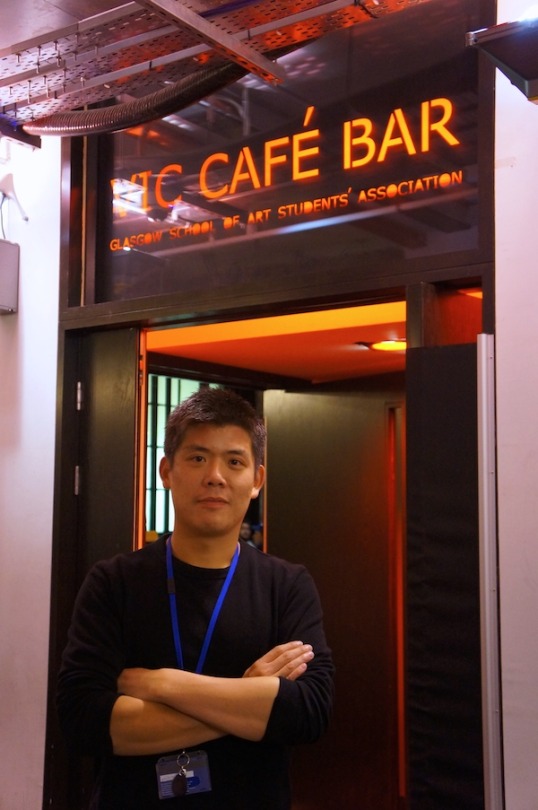
Glasgow is one of the most beloved, yet notorious, clubbing centres of the world, known for the utter lunacy, in both the good and bad senses, of its crowds. So it's nice to know that its scene has a calm centre in the affable and unflappable Bob Wong, the head of security (“I prefer 'doorman' or 'steward' but that confuses people, so I usually end up saying 'bouncer',” he laughs) at the Glasgow School Of Art – a venue that has hosted everything from the most manaical techno to the heaviest dub to avant garde noise events.
Bob is a true lover of and participant in Glasgow's underground scene – indeed, in researching this article, his was the first name mentioned by every Glaswegian we spoke to. “Scots know how to party!” he says simply as explanation of why he loves the scene. “You can't beat seeing likeminded people – people of all ages, race, colour, sexuality, social background etc etc etc – switch off from their daily grind of the working week and completely lose themselves, intoxicated with their poison of choice, in the music they love and really go for it on the dancefloor.”
This no-nonsense attitude and affection for the crowds runs through everything he does. “I, and the rest of my team are there to ensure the punters have a great night, and more importantly a safe one: safe from themselves and each other when they inevitably get carried away.” And to do this he insists on a friendly culture: “I hated working with macho 'bouncers',” he continues, “who could only brag about how many fights they'd won or how many girls they've slept with – so when I finally became head steward, I made a point of having only people with a similar mindset to mine on the team, and it makes a difference to everyone.”
Has he ever been scared, surrounded by punters when they “inevitably get carried away”? “You're probably expecting a mad story here,” he smiles, “about some kinda riot or a scenario where I've been stabbed or shot at – but no... if I ever get into a situation where I'm in a fight where my life is being seriously threatened then I can honestly say I'll have failed at my job. My scariest moments have to be the occasions where drunken punters have thought it was a great idea to slide down the banister of the stairs from the cloakroom on the top floor of the Artschool – a 4 level building – and have fallen over the edge and down between the flights of stairs... Thankfully no-one ever fell past the next floor but, all the same, hearing the thud and seeing them hit the floor you automatically assume the worst when they go limp and unresponsive! Thankfully and surprisingly there have never been any fatalities in my time (don't jinx it Bob haha!), just a few fractured vertebrae...”
#clubs#doorpersons#los angeles#new york#club kids#glasgow#ravers#low end theory#gay clubs#hip hop#johannesburg#house music
4 notes
·
View notes
Text
Looking back on 2017, ahead to 2018 – PVC Roundtable Discussion
Scott Simmons The Editblog
When I got to looking back over 2017 I’m stuck by the fact that I’m not really struck by anything particularly ground-breaking or earth-shattering that came down the line this year, at least as far as film and video post-production goes. This roundtable discussion is something PVC has done before and it’s fun to read back on them as there is a lot of diverse talent that contributes to ProVideo Coalition. Reading back on writer’s thoughts from last year, I don’t think much has changed this year. Thinking back on my year of work I know that not a ton changed for me. I probably expected a lot of clients to come in the door asking about 360 VR and HDR … but they didn’t. It feels like 360 video production hasn’t taken off like the NAB shows of the last couple of years would make you think it would (hmmm, didn’t some NAB shows of years past make you think 3D stereoscopic would take off?) but there are some companies both big and small doing it and doing it well. 360 video seems to have become a viable niche that these dedicated production companies do as a turn-key service instead of us all having to learn it. Both Adobe and Apple did add 360 video editing features into their NLEs but they added them via a technology acquisition and not building them in-house. To me that says “VR video is important but not that important.”
I was thinking that 2017 might be the year that nearly 100% of the jobs that I edit came in the door in 4K or higher resolution. I was wrong about that as there was still a LOT of 1080 footage that I sat down to edit this past year. While this was a bit surprising in the end it was a blessing as some production … shoot … a … lot … of … footage these days. But I think the reality is that reality-style shows and productions shooting multiple cameras don’t have the luxury of unlimited transfer time and unlimited drive space when it comes to moving all that footage around. The 4K work that I saw this past year was reserved to more cinematic, film-style production where the filmmakers were crafting beautiful images and not capturing everything under the sun. That’s the way is should be, and it looked beautiful. As for that claim I read a time or two that 8K is the new standard for filmmaking … hogwash. The few times that I saw footage that was larger than 4K it was instantly transcoded out of its native resolution, not just for the offline edit but for final finishing as well. I’m sure in some magical super-computer world they are cutting and finishing 8K but not most of us. And we won’t be in 2018 either. I said this for 2016 and I say it again for 2017: I even had to deliver some SD spots this past year.
One thing I did see is more projects bound for the web. That might be offshoots of bigger productions or agencies dedicating entire campaigns to YouTube and Facebook. There is no doubt that web video is huge and we’re all just producing content for it. For 2017 it feels like a lot of agencies and production companies finally realize that it takes real resources to produce good web content so they aren’t trying to spend rock-bottom-dollar on web content anymore. That’s a plus. The biggest workflow change I saw with big uptick in web content is the need for captioning since so many web videos are viewed with the sound off. This might be an unfortunate side-effect of the hated autoplay video but if the client wants captions, we give them captions. This is where cloud-based transcription tools and their editing app integration, like SpeedScriber and Transcriptive, have been God-sends. I never would have thought that transcription tools would be my BIG THING from 2017 but lo and behold … I think it is.
So that makes me wonder: what about VR and AR and HDR that was supposed to be the coming thing? I think HDR is still in its infancy as far as mass consumption goes. Better (affordable) cameras and better (affordable) monitors means HDR tools are trickling down into the affordable edit suite but it’ll still be awhile, a long while, before HDR is part of that Facebook video. AR was supposed to be a big thing but that seems more the realm of the app developer than the video producer. The zombie gunship thing that Apple demoed was fun for about 1 minute on the new iOS and maybe I’ll make better use of placing virtual IKEA furniture in a room when I move to a new house so I’m still waiting for the breakthrough AR app on my phone and in my life. Truth is I’m not looking very hard for it. As for VR, a VR arcade opened in my town last year. I haven’t been there or taken my kids there yet. One is too young but maybe I’ll take the other. It’s only a block from my office. My oldest son got a VR Christmas gift where you download a bunch of 360 video apps to go along with, gasp, real printed books! The funny thing about the 360 apps that go along with this gift: they are all rendered 360 animation and not a frame of video in any of them. Maybe app development is as important a skill to have today as video literacy. I do think it’s harder to learn.
Steve Hullfish CUT.N.COLOR
I’d agree with you, largely about 4K. But I just did an interview with Dan James who cuts Grand Tour (what used to be Top Gear), which is definitely “reality.” And they are shooting as much as 30 hours a day of material ALL IN 4K! It’s a massive amount of material and obviously TONS of data (mostly Arri Alexa), but they have the budget to do it, obviously. Dan does believe that MOST of the people shooting 4K are doing the more cinematic projects though, so he’s the exception to the rule.
My personal work that wasn’t feature films was all for the web. Last year that was about 50 projects. No broadcast. And I’ve been using a ton of SpeedScriber to get my work done this year, not just for Art of the Cut, but also for the web-projects. Clients that I never would have transcribed stuff for – because of the cost – are now getting transcripts and I’m actually seeing more work because of it. When they have the transcript, they actually see their shot footage as a resource that’s more accessible for them and therefor they’re calling saying, “Hey, could we repurpose that interview and make a quickie web video out of it?” Sure!
Personally, I’ve had no call for VR or HDR. I did do an AR project, but that was 2 years ago. That was definitely all 3D and motion capture. I shot a promotional video for the app, but I’d agree that it’s more of a boon for app developers and 3D animators and mocap companies.
As for cheap stuff, I’d point to the increase in cheap stock footage. My use of places like pond5.com and videohive.net has almost completely replaced my use of places like Getty and ArtBeats – proof of which is the notification I just got from ArtBeats that they are closing shop in February. Unfortunately I had just dropped a large sum of money on a one-year subscription to their PremiumBeat service which was supposed to give me “free” stock footage through October of next year. Just a few years ago, prices for decent stock footage would be in the hundreds of dollars a shot. Now, I can get pretty great looking footage for anywhere between $8-$40 per shot. I’ve even subscribed to places with cheaper monthly or annual subscriptions, though I’ve found the quality of those is rarely good enough for my projects, but sometimes you find some gems, and if you can even find one decent shot per month, it pays for itself.
Art Adams Stunning Good Looks
As for that claim I read a time or two that 8K is the new standard for filmmaking … hogwash.
It’s interesting to see the camera companies trying to reinvent their products by making high resolution and large format the next big thing. RED and Panavision are pushing VistaVision-sized sensors, which are interesting but require investing in very expensive glass. Not a problem for Panavision, but for others I think it’ll be a barrier to entry. Sony’s large format camera is… well… a little disappointing in that it’s slower than it should be. At a time when lighting budgets are getting cut and schedules are getting shorter, making a camera that requires more light is… an interesting choice.
For 2017 it feels like a lot of agencies and production companies finally realize that it takes real resources to produce good web content so they aren’t trying to spend rock-bottom-dollar on web content anymore. That’s a plus.
Yeah, I see a little of that. It feels like they are spending money reluctantly, but still spending it. One of my largest clients is going through a “Why are we spending so much on video?” phase, as some new executives don’t understand that their massive library of expensive but very high quality marketing videos is largely responsible for the company’s success. Overall, though, there are a lot of production companies in the Bay Area who are struggling. I walked into one the other day and the office was empty except for two people. I asked if everyone else was on vacation; he said, “No, we’ve just laid everyone off. We’re hiring only as needed now.” And they’re one of the busier companies.
So that makes me wonder: what about VR and AR and HDR that was supposed to be the coming thing? I think HDR is still in its infancy as far as mass consumption goes. Better (affordable) cameras and better (affordable) monitors means HDR tools are trickling down into the affordable edit suite but it’ll still be awhile, a long while, before HDR is part of that Facebook video.
I thought it would take off faster than it has. Set top boxes can handle it now, and TVs are fairly commonplace, but the standards are still all over the place but for Dolby. I heard rumors that HDR10 would be the next big thing because it was less expensive, but Dolby doesn’t seem to have an issue getting their chips into TVs.
Hollywood is mastering and remastering content like crazy, so they seem to think it’s going to happen.
AR was supposed to be a big thing but that seems more the realm of the app developer than the video producer.
Yup, that’s gonna be all about programming.
As for VR, a VR arcade opened in my town last year. I haven’t been there or taken my kids there yet.
Live action VR seems to be dead. Nokia folded Ozo and laid off the Ozo team earlier this month.
Maybe app development is as important a skill to have today as video literacy. I do think it’s harder to learn.
It does seem to be where the money is. That and IT. I just read an interesting story about how India is seeing massive IT layoffs because companies have learned that outsourcing there is a losing proposition. I remember reading a few years ago about how app development was going to be a losing proposition for Americans as all that work was going overseas, but I’m not sure that’s the case anymore.
Brian Hallett
In Focus
This year with cameras we saw some promising innovation. Sony announced the 6K Full-Frame VENICE, Panasonic released their EVA1 a VariCam LT – light style camera, Canon finally gave shooters raw recording with the C200, Blackmagic made a much more user-friendly camera in the URSA Mini Pro and RED announced their Monstro an 8K Vista Vision sensor camera. The big take away is larger and larger sensors are here to stay and the resolution to make those impactful fields of views, even more, eye-popping is right about the bend, if not already here.
If you can afford any of these cameras listed above then you will find yourself with a very capable camera with very little limiting technology. No longer should a shooter be able to say their camera is holding them back from creating wonderful images. I feel like great looking footage squarely falls on one’s craft, preparation, and willingness to learn the new technology and the confidence to apply it well.
4K is great, 6K is better and 8K seems to be best for 2018.. this, of course, is what people will say. The reality is I’m stilling shooting a small percentage of my projects in 4K with a far higher percentage of my clients requesting me to shoot in 1080. Will we see a 10K camera announcement in 2018? I think it might be a possibility. I would not bet against such an announcement, but the likelihood of shooters capturing footage at 8K, let alone 10K, will still seem pretty far off for most of us. One of the things I want to remind shooters is craft is more important than a camera choice these days when many cameras have around 15 stops of dynamic range and more than 4K sized sensor. Great cinematic footage comes not only from camera choice but also from the lenses one choose, the lighting, the movement and the composition. The camera is just part of the equation.
VR and 360 video… I will call it here. I think these two fads will lose their glimmer in 2018. It is far easier for an audience to feel emotionally moved from a well-crafted edit and story than from a 360-degree world view of a scene or setting. Maybe 180-degree footage will become a thing, but I doubt it. I always think of shot selection and editing as a visual metaphor for good writing and grammar. Good writing and grammar can strike the emotional bone in as few words as possible and great visuals and story can do the same by highlighting what we want to see in that moment.
Lenses… as the sensors grow in size so too will the lens options. This could be a huge year for anamorphic lenses. Rumor has it Sigma is developing an anamorphic line and NAB 2017 saw Atlas Lens Co. announcing their less expensive options. We will have to wait and see, but I expect NAB 2018 and Cine Gear 2018 to be especially interesting.
Adam Wilt Camera Log
I’d say the biggest camera/production trends at the turning of the year are “beyond pixels” and the birth of practical HDR. These may not be things we all deal with on a daily basis, but they’re fundamental shifts in underlying capabilities and available infrastructure that will affect how we perceive “video” in the years ahead.
Beyond pixels: 4K/UHD didn’t last long as a plateau on which camera systems could stabilize, but we’re not converging on 8K as the standard. Increasingly we’re seeing cameras liberated from the tyranny of a fixed pixel count.
Many, led by the DSLR / mirrorless crowd, supersample their images from 5K or 6K or more down to UHD or HD for recording. We’re at the somewhat awkward point where the 4K out of a lowly GH5 or EVA1 out-resolves the 4K from a Varicam35 or VaricamLT (and yes, there’s more to image quality than resolution, but the point remains).
Some cameras—RED really led this revolution—don’t restrict recording to standard frame sizes, either, offering a variety of native frame dimensions for capture. Often these are raw captures, but not always: you can shoot “6K anamorphic” on a GH5 (actually 4,992 x 3,774), and get a long-GOP HEVC file, ready to edit.
Yes, 8K as a broadcast and distribution standard is coming, with the 2020 Olympics as a driving function (never mind that it’ll be a very limited broadcast standard by that point, earlier Olympics have served as similar drivers for HD and UHD broadcast-standard milestones), but as we get beyond the point where pixels are resolvable—where vernier acuity / hyperacuity takes over from spatial acuity as the psychophysical determinant of spatial image quality—“smoothness” takes over from “sharpness” and the actual pixel count becomes less critical, less of a make-or-break number. Once you get past FHD resolution, it’s no longer as much about “is it good enough” but “it’s more better”.
Cameras and NLEs are increasingly format-agnostic: once you’re “beyond pixels” you can just pick the resolution that works for your project and not worry about output formats until it’s output time.
Practical HDR: While we’ve been looking at impressive HDR demos for several years now, it’s only at the tail end of 2017 that we’re starting to see practical HDR: high dynamic range for the rest of us, and wide color gamut along with it. HDR-capable TVs are now widely available, almost all with HD10 and an increasing number with HLG. Even comparatively low-end cameras like the Sony FS5 and A7Riii and Panasonic GH5 and EVA1 offer HLG recording alongside their existing log modes. The recent update for Final Cut Pro X makes authoring HLG and HD10 output as painless as cutting a Rec.709 show, whether your footage comes in as log or HLG. Netflix and Amazon Prime both offer HDR distribution, as does YouTube, and ATSC 3.0 will deliver it OTA for those of us who get TV via antenna (yes, some of us still do!).
The early results won’t always be pretty; heck, most of the HDR demo reels at the past couple of NABs showed that even the high-end folks haven’t yet mastered this new language. But the crucial fact is that now the workers can control the means of production, and viewers can see the results. May a thousand flowers bloom—some excessively bright, many garishly oversaturated, but flowers nonetheless. The shackles of 100-nit, Rec.709 are loosening, and our NLEs and displays are catching up to the wide dynamic ranges and wide color gamuts our cameras are capable of. Finally, there’s something to do with all those stops of highlight headroom aside from flattening them in the grade!
Woody Woodhall Sound for Picture
Professional audio for post production hasn’t seen much in the way of game changing advances in the past year. There are the usual iteration improvements in software and hardware but since the “sound barrier” was surpassed with 192K, 32 bit floating point audio files, we’ve been well beyond the realm of human hearing for some time. Somewhat ironically at that same time period the highly lossy audio type – mp3 – gained in popularity. That format died this year, but I digress….
That being said there were some things to note this year. Dolby Atmos has really started to reach critical mass. At this point there are well over 600 titles mixed in the format and the gradual implementation of the AC-4 codec will really get it into homes, cars and mobile devices. For those that don’t know, Atmos is an object based audio experience. So rather than being confined by the monitor speakers, instead, each panning of the audio is based in nodes including overhead. This system allows for the Dolby decoders to decipher how many objects are available to it and then create the mix accordingly. Atmos is created in a 7.1 surround environment, but can fold down into stereo and mono or up to its full compliment of ceiling monitors along with a full array, surrounding the viewer, in professional theatre settings. At CES this year LG announced that their OLED TV monitors will support the technology sending it out to a compatible audio receiver.
AC-4 can easily handle these multiple streams and in a very efficient, compressed manner. It is about 4 times as efficient as the now standard AC-3 codec. The other touted benefits include “personalized content delivery.” That feature sounds like a bit of a nightmare for audio master delivery, as well as for the end user. The idea is that multiple streams of the mix would be available to the end user. They could then choose to “only hear the ice” from a hockey game for instance and remove the announcers. Or they could increase the dialog level while decreasing the music and effects level. Or basically – remix the show I’ve delivered!
The other main item to note is the acquisition of Fairlight audio into the DaVinci Resolve program from Blackmagic Design. There are still kinks to be worked out in the implementation but BMD has done a great job over the years in it’s acquisitions and further improvements to those new corporate purchases. I believe that over time this will be a game changer for post production audio. It offers many of the same workflows and features of the many DAWs already in the marketplace. The main determinate factor will be the advancements to the audio module by the company BMD itself. They have proved time and time again to not only look to improve the products it acquires, but to also be keen on listening to user’s ideas, thoughts and comments and making adjustments for the better. It comes out of the box with many things that are currently only provided third party on most other DAWs. BMD also has an I/O box as well as an accelerator card in the works. Fairlight has a long history in audio and as an additional component of the DaVinci Resolve program, that is also steadily improving it’s picture editing capabilities, the future shines bright for this well received addition.
What I most look forward to in 2018 is a course correction in the computing hardware. Ever since Apple released the aptly dubbed “trash can” it’s been an uphill climb with ports, drivers and additional boxes to support the additional hardware required. Some of us long for the simplicity of the old 9600 with it’s six PCI slots. I love the increases in computing power today of course, but it would be great if there were more streamlined approaches to the ugly cable mess from the front panel of the Apple Mac Pro. It might be a well designed box from a “design concept” point of view, however, needing external drives and having no PCI slots makes its “elegance” lacking in the “real world” department. They say that professional users like us are in for a great re-imagining of the Mac Pro, fingers crossed. (As usual…)
Allan Tépper TecnoTur
At our suggestion, in 2017, more audio/video apps for mobile devices (Android and iOS) began to support 48 kHz audio sampling and to make it the default setting. I hope that the few holdouts will embrace this in 2018.
In 2017, more manufacturers started to properly label non-integer framerates in camera menus, even in consumer models. I hope that the few holdouts will embrace this in 2018.
In 2017, Apple started to offer automatic matching of framerates and type of HDR (or lack thereof) in its AppleTV 4K. I hope that in 2018, Apple will finally start supporting non-integer framerates in macOS, for hardware outputs and internal displays. I also really hope that in 2018, Apple will realize its terrible mistake and go back to offering the option of matte screens in its products, and that it will substantially update the Mac Mini.
In 2017, more digital microphones (with digital output) and audio interfaces were delivered that are focused on mobile devices (Android and iOS). Some of them specifically included monitoring to react to the lack of analog headset jacks in many of the latest mobile devices, by adding inboard monitoring, some of which are latency-free. In 2018, more of the holdouts will likely update their audio products to include built-in analog monitoring.
In 2017, HP announced the first touch matte color display. I hope that in 2018, HP and other manufacturers follow the same path with other touch matte color displays.
In 2018, more of the video sharing platforms will likely support H.265/HEVC for upload. More online services for remote interviews came out and were improved in 2017, and I expect that to expand in 2018.
In 2017, a large number of Chromebooks with matte or glossy screens started to offer official support for Android apps. Some of those apps are already optimized for a larger, sizable window on Chromebooks. In 2018, certainly many more Android apps will be optimized for a larger, sizable window on Chromebooks.
The post Looking back on 2017, ahead to 2018 – PVC Roundtable Discussion appeared first on ProVideo Coalition.
First Found At: Looking back on 2017, ahead to 2018 – PVC Roundtable Discussion
0 notes